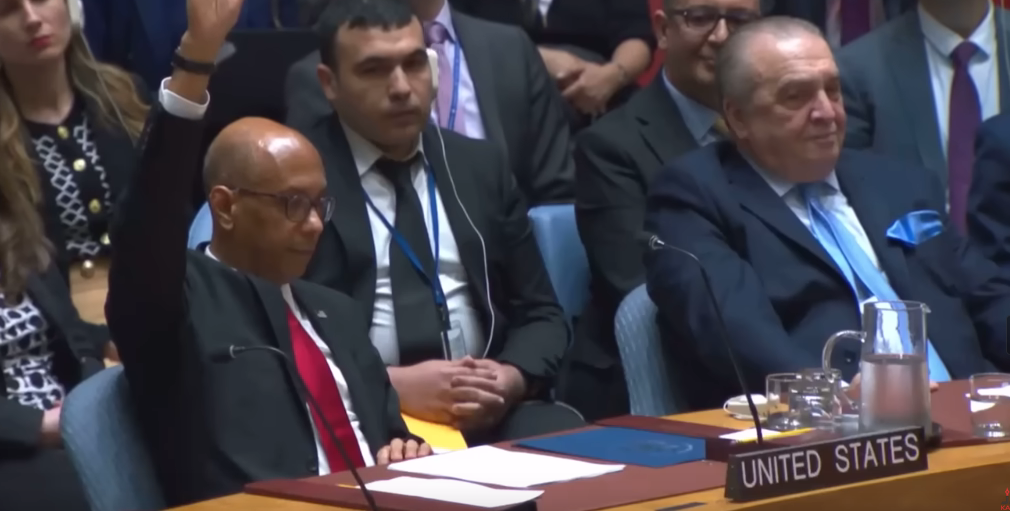Photos: YouTube\Twitter
The arc of coverage of 2020 congressional redistricting went from speculation that Republicans would end up with a massive advantage—because they controlled significantly more state legislatures—to surprise that Democrats managed to gerrymander their way to roughly the same number of seats as Republicans. This result was deemed good news, as announced for instance in this news “analysis” from the New York Times (3/10/22): “A Potential Rarity in American Politics: A Fair Congressional Map.”
Along the way, articles generally noted in passing the overall decrease in competitive elections resulting from the aggressive partisan gerrymandering, but to the extent that this caused concern, it wasn’t about disenfranchising voters.
“Gerrymandering is all about elected officials trying to keep their power by manipulating the makeup of the population that they represent, thereby making it easier for their party to win,” CNN (1/25/22) accurately explained in a “Gerrymandering 101” piece. “The consequences are severe.” So far, so good.
What are those consequences, you ask?
The increase in partisanship, “increasing polarization” and the resulting congressional “gridlock.” This concern about “an even more divisive Congress,” as USA Today (2/21/22) put it, was a consistent theme across corporate outlets. In these two stories, increased ideological diversity was the main problem identified with gerrymandering. (In fairness to CNN, the headline here, “How Gerrymandering Makes the US House Intensely Partisan,” leaves open the possibility that there are other problems with gerrymandering to be covered in other articles, though a search on CNN’s site didn’t turn up mention of other problems.)
But even when they got the headline right—as the New York Times (2/6/22) did with “’Taking the Voters Out of the Equation’: How the Parties Are Killing Competition”—articles failed to explain either how voters are “taken out of the equation” or why doing so is a problem. Here the Times called the current round of gerrymandering “the latest worrying sign of dysfunction in the American political system,” and went on to identify that worry as the “lack of competition in general elections [that] can widen the ideological gulf between the parties.”
‘Bright spot for democracy’
Ideological polarization wasn’t the only threat corporate media identified stemming from gerrymandering. They were also worried that gerrymandered maps could result in a lopsided distribution of power between the two major political parties.
A case in point was Ohio, where the Washington Post’s The Fix (1/13/22) explained that Republicans redrew congressional maps in a way that turned 64% of them into safe Republican districts in “a particularly brazen attempt…to skirt the will of voters.” This plan was struck down by the state’s supreme court because it ran afoul of the state constitutional requirement that redistricting reflect the “relative statewide preference of voters,” and Republicans get on average 54% of the votes in statewide elections. Had the GOP gerrymandered its way to 54% safe districts for their party instead of 64%, all would have been hunky dory as far as the Washington Post (and the state’s supreme court) were concerned.
But what if voters have a preference for something other than single-party districts? What if they actually want a choice on election day? This problem isn’t even on the radar.
The focus on party rather than voter representation reached its absurd logical conclusion in the March 10 Times piece cited above (“A Potential Rarity in American Politics: A Fair Congressional Map”). The premise here is simple: Because the Democrats managed to gerrymander their way to roughly the same number of districts as the Republicans, all is well with US democracy. Sure, the article admits:
Democrats and Republicans…drew extreme gerrymanders with twisting and turning district lines, denying many communities representation in Congress. Dozens of incumbents were shielded from serious challenges. The number of competitive districts declined. But, Dunlike in previous cycles, both parties’ extreme gerrymanders have effectively canceled each other out.
Ergo, no problem! The article actually says, I shit you not, that the result is “a surprisingly fair map” and a “bright spot for American democracy.” I don’t think that word means what you think it means. Democracy is a form of government based in popular sovereignty, in which the people choose their leaders and have agency in the decisions that determine their social and economic conditions. Note: people, not political parties.
Irrelevant voters
Missing from all of these articles is a rudimentary understanding of what uncompetitive districts—that is, one-party districts—actually mean for voters. Which is to make them irrelevant.
Media understand this when they are looking at authoritarian regimes elsewhere (or at least the ones that aren’t US client states): Where there is only one party on the ballot, or only one party with a chance of winning, voting is a meaningless activity, and is not evidence of democratic decision-making.
Moreover, one-party rule in the US is also incumbent rule. In 2020, congressional incumbents had a win rate of 96%. Lest you be lulled into thinking—as corporate media would have you believe—that uncompetitive districts simply move the site of political contestation from the general election to the primary election, please know that incumbents win primary races at an even higher rate. In 2020, more incumbents lost primary races than in any year since 1974, and the win rate was still 98%. As Maddow Blog (8/19/20) noted, “The number of congressional incumbents who lose primary campaigns is, in general, vanishingly small.”
These figures took me a few minutes to google, which is to say they are readily available and should be known to political reporters. Yet the articles fretting over the growing ideological divide back that claim up with the idea that primary threats are driving hardening partisan positions. Here’s CNN (1/25/22):
When the results of a general election are a foregone conclusion, the primary race is what matters. A threat from inside the party—be it Republican or Democrat—can pull candidates to the extreme edges of their party.
And the New York Times (“‘Blood Red’: How Lopsided New District Lines Are Deepening America’s Divide,” 2/27/22):
When primaries are the only campaigns that count, candidates are often punished for compromise. The already polarized parties are pulled even farther apart. Governance becomes harder.
While neither piece outright says that primaries are meaningful political contests, these statements certainly imply that they are—and the argument that one-party districts drive political polarization depends on that fiction.
Vanishing democracy
In fact, one-party rule, whether divided district by district equally between two parties or not, is exactly as undemocratic as that term sounds; and it is journalistic malpractice not to point that out. Especially while you are reporting that the percentage of competitive districts in Congress is set to shrink from an already appalling 17% after the 2010 redistricting to a truly deplorable 9% after the 2020 redistricting (New York Times, 2/6/22).
Given this political reality, it is not at all surprising that there is no relationship between popular political opinion and congressional action. Or, in the words of the reform group Represent US, “The number of Americans for or against any idea has no impact on the likelihood that Congress will make it law.”
Now this is what I would call a “severe consequence” of gerrymandering (and other anti-democratic dimensions of US electoral systems, mainly campaign finance and voter suppression). But I could find only one, brief, reference to this, a quote from Represent US’s Joshua Graham Lynn in the USA Today piece (2/21/22): that uncompetitive districts are “driving the lack of action on issues that a lot of Americans really care about.”
There’s a word for this reality, but it isn’t democracy: It’s oligarchy. Just don’t look for that word in media outlets that are owned and run by US oligarchs.
This content is from the media watchdog group FAIR and was written by Dorothee Benz.















